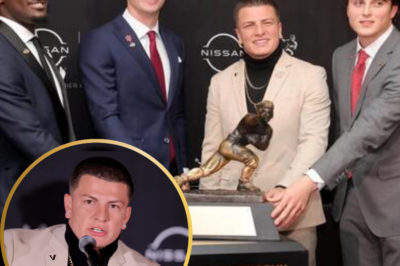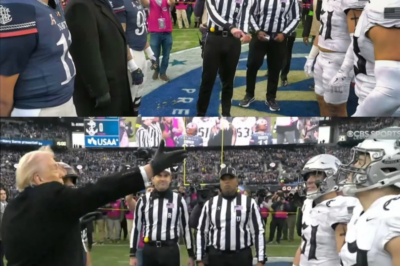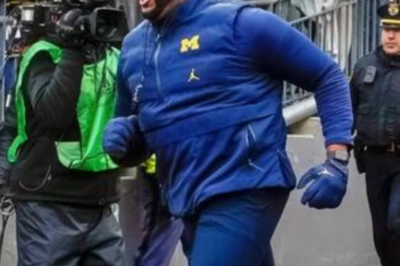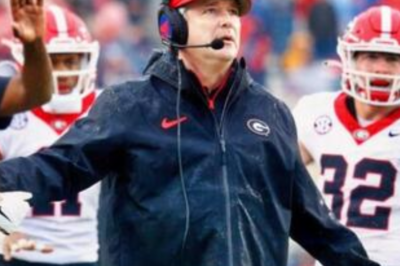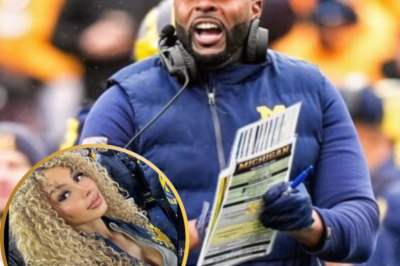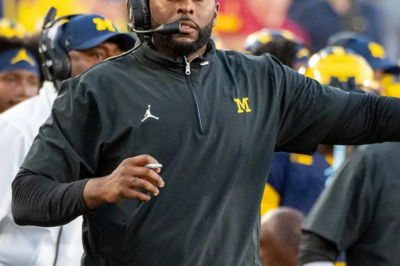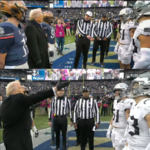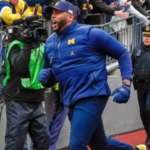VIDEO: Al Michaels and Kirk Herbstreit turned off their filters and destroyed Carson Wentz on national television. It was brutal.
It was a game that, on paper, promised little. A mid-December Thursday Night Football matchup between the Minnesota Vikings, navigating the treacherous waters of a season without their franchise quarterback, Kirk Cousins, and the Los Angeles Chargers, a team perennially described as “underachieving.”
For many viewers, it was background noise—a slate of football to carry them through to the weekend.
But for those who listened closely to the voices emanating from the broadcast booth, the game transformed into something far more compelling, far more brutal, and infinitely more telling. It became a 60-minute, nationally televised autopsy of one man’s career: quarterback Carson Wentz.
The pathologists wielding the scalpels were not mere sideline reporters or hot-take artists on a post-game panel.
They were two of the most respected voices in the history of sports broadcasting: the legendary Al Michaels, whose voice has been the soundtrack to some of the most iconic moments in modern sports, and Kirk Herbstreit, ESPN’s premier college football analyst whose foray into the NFL booth has been marked by incisive, prepared, and unflinchingly honest commentary.
Together, they did not just call a football game; they delivered a stark, unvarnished, and at times, seemingly personal critique of Wentz’s performance that quickly eclipsed the action on the field, becoming the primary storyline of the night and sending shockwaves through the NFL world.
To understand the weight of their words, one must first appreciate the precarious position from which Carson Wentz was operating.
This was not the 2017 MVP-frontrunner, the dynamic playmaker who was leading the Philadelphia Eagles to a dominant season before a devastating injury.
This was a journeyman quarterback, on his fourth team in as many years, thrust into the starting role after the season-ending Achilles tear to Kirk Cousins.
The Vikings, against all odds, had remained competitive, but the experiment with Wentz was a calculated, high-risk gamble.
The Chargers game was his chance to prove he could still be a capable starter, to demonstrate that the flashes of brilliance were not entirely extinct, to silence, even if just for a week, the legion of doubters who pointed to his penchant for turnovers, questionable decision-making, and perceived lack of pocket awareness.
He did none of those things. Instead, what unfolded was a performance that seemed to be a “greatest hits” compilation of the very flaws that have defined his career’s downward trajectory.
And Michaels and Herbstreit were there to provide the liner notes, in real-time, with a clarity that was both masterful and merciless.
The Anatomy of a Broadcast Takedown: A Shot-by-Shot Account
The criticism was not a single, explosive rant. It was a death by a thousand cuts, a slow, methodical, and thoroughly documented deconstruction of a quarterback falling apart under the bright lights.
The tone was set early. Following a series of stagnant drives, hesitant throws, and missed opportunities, Herbstreit began to connect the dots for the national audience.
“You look at Carson Wentz,” Herbstreit stated, his voice calm but firm, “and you see a player who is thinking, not reacting.
The game doesn’t look slow for him right now; it looks like it’s moving a million miles an hour.
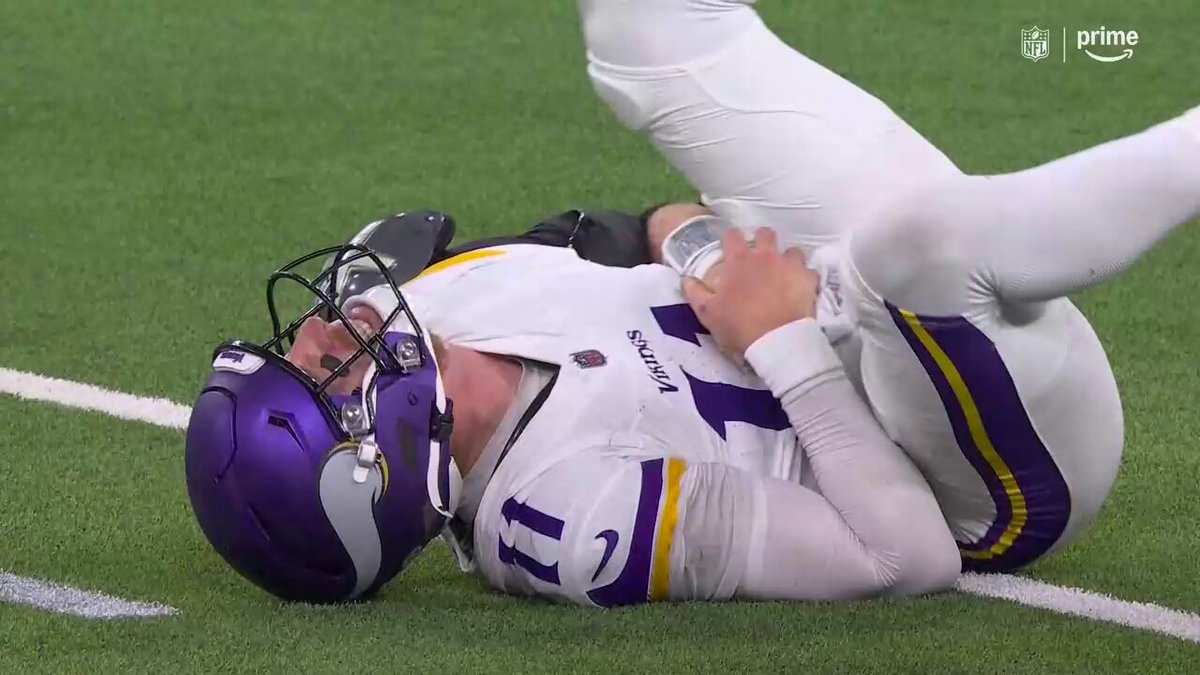
The trust in his protection seems shaky, the timing with his receivers is off by a half-beat, and when that happens, the entire offensive ecosystem breaks down.”
This was not mere criticism; it was a diagnosis. Herbstreit was peering under the hood and explaining the complex mechanical failures that lead to the simple, ugly result on the scoreboard.
He was articulating what every fan could see but couldn’t necessarily name—the paralysis by analysis that afflicts a quarterback who has lost his confidence.
As the game progressed and the Vikings’ deficit grew, the commentary escalated in both frequency and sharpness.
The pivotal moment, the one that would be clipped and shared across social media platforms within minutes, came after a particularly egregious Wentz turnover.
Dropping back under pressure, he retreated, scrambled haphazardly, and instead of throwing the ball away, forced a pass back across his body into heavy traffic.
The result was a near-interception, a play that was so fundamentally unsound it defied logical quarterbacking.
The booth fell silent for a beat, allowing the folly of the play to sink in for the viewers.
Then, it was Al Michaels, the master of understatement, who delivered the line that would become the headline.
“With Carson Wentz,” Michaels said, his dry delivery amplifying the sting of the words, “it often feels like the play is never over. And unfortunately for the Vikings, that’s rarely a good thing. You just never know what you’re going to get. It’s a rollercoaster, and right now, it’s one that’s headed straight down.”
The line was devastating in its simplicity and accuracy.
It encapsulated the entire Wentz experience—the maddening inconsistency, the breathtaking potential for both good and ill, and the ultimate exhaustion for a fanbase and a team that has to endure it. Michaels, a broadcaster known for letting the moment speak for itself, had officially passed judgment.
Herbstreit, seizing on the momentum, piled on with the analytical hammer.

“What are we seeing here, Al?” he asked, rhetorically. “This is a failure in fundamentals.
Your first read isn’t there, the pocket is collapsing, you have to live to fight another day. Throwing across your body, against your momentum, into the heart of the defense… that’s a cardinal sin you learn in Pop Warner. At this level, with the game on the line, it’s unforgivable. It’s a disaster.”
The word “disaster” hung in the air. This was not the hyperbolic language of a talk radio host; it was the measured, professional assessment from one of the most credible analysts in the sport.
He was not just calling a bad play; he was questioning Wentz’s foundational football IQ and his viability as an NFL starter.
Throughout the second half, the autopsy continued. They critiqued his footwork, pointing out how his happy feet in the pocket prevented him from stepping into throws.
They highlighted his inability to work through his progressions, often locking onto his first receiver and failing to see wide-open check-downs.
They lamented his body language—the slumped shoulders, the exasperated looks to the sky—interpreting it as a sign of a defeated leader.
Beyond the Game: The Broader Context of a Career at the Crossroads
What made the broadcast so compelling was that Michaels and Herbstreit were not merely reacting to one bad game.
They were contextualizing a career. Their commentary served as a narrative throughline, connecting the dots from his spectacular rise in Philadelphia, through the bitter divorce in Indianapolis, the forgettable stint in Washington, and now to what felt like a last stand in Minnesota.
Herbstreit, in particular, often referenced Wentz’s past. “This is the same issue that followed him out of Philadelphia,” he noted after another hurried throw. “
The reluctance to take the simple, easy play. He’s always searching for the home run, for the moment to make the spectacular play, and in doing so, he often misses the single that keeps the drive alive. It’s a lesson he has, for whatever reason, been unable to learn.”
This elevated the critique from a simple game-call to a profound sports tragedy.
They were chronicling the fall of a once-great talent, a player whose own stubbornness and inability to adapt had become his greatest adversary. The broadcast became a real-time obituary for his potential.
News
SHOCKING LIE UNCOVERED: Diego Pavia’s deception isn’t just a scandal—it’s a revelation that threatens to EXPOSE the entire 2025 Heisman race as a fraud. What are they hiding?
SHOCKING LIE UNCOVERED: Diego Pavia’s deception isn’t just a scandal—it’s a revelation that threatens to EXPOSE the entire 2025 Heisman race as…
VIDEO: Trump’s single coin flip changes EVERYTHING. What happened next will leave you speechless.
VIDEO: Trump’s single coin flip changes EVERYTHING. What happened next will leave you speechless. In the annals of American political…
SHOCK MOVE: Sherrone Moore Just DROPPED A BOMB on Social Media… And It’s About to IGNITE The Rivalry.
SHOCK MOVE: Sherrone Moore Just DROPPED A BOMB on Social Media… And It’s About to IGNITE The Rivalry. In the…
BREAKING: 2 Georgia Stars Arrested in Shocking Pre-Playoff Incident—Will It Derail Their Championship Run?
BREAKING: 2 Georgia Stars Arrested in Shocking Pre-Playoff Incident—Will It Derail Their Championship Run? In a shocking turn of events…
SHOCKING: Film Star Claims This Photo Shows Sherrone Moore’s SECRET During Michigan’s Biggest Game. You Won’t BELIEVE What He Was Really Doing.
SHOCKING: Film Star Claims This Photo Shows Sherrone Moore’s SECRET During Michigan’s Biggest Game. You Won’t BELIEVE What He Was…
SHOCKING: Michigan makes urgent employment decision involving Sherrone Moore’s personal life. You won’t BELIEVE the details.
SHOCKING: Michigan makes urgent employment decision involving Sherrone Moore’s personal life. You won’t BELIEVE the details. In the world of college…
End of content
No more pages to load

![Al Michaels & Kirk Herbstreit Took Turns Taking Vicious Shots At Carson Wentz During Vikings' Embarrassing 'TNF' Loss To Chargers [VIDEOS] - NewsBreak](https://img.particlenews.com/image.php?type=thumbnail_580x000&url=2t2HoD_15wpIv5e00)
